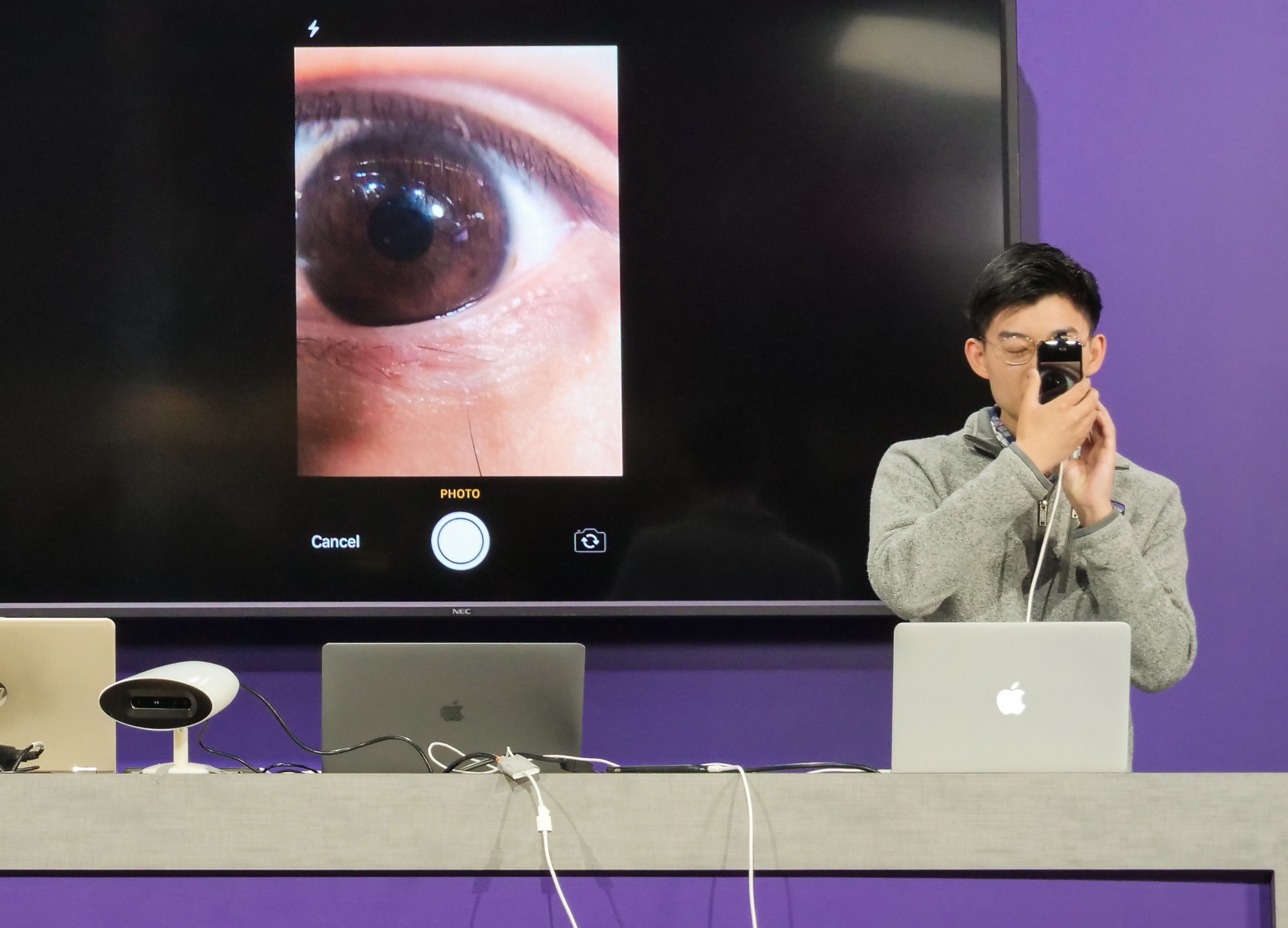EasyGlucose takes advantage of machine learning’s knack for spotting the signal in noisy data, in this case the tiny details of the eye’s iris. It turns out, as creator Brian Chiang explained in his presentation, that the iris’s “ridges, crypts, and furrows” hide tiny hints as to their owner’s blood glucose levels.
These features aren’t the kind of thing you can see with the naked eye (or rather, on the naked eye), but by clipping a macro lens onto a smartphone camera Chiang was able to get a clear enough image that his computer vision algorithms were able to analyze them.
The resulting blood glucose measurement is significantly better than any non-invasive measure and more than good enough to serve in place of the most common method used by diabetics: stabbing themselves with a needle every couple hours. Currently EasyGlucose gets within 7 percent of the pinprick method, well above what’s needed for “clinical accuracy,” and Chiang is working on closing that gap. No doubt this innovation will be welcomed warmly by the community, as well as the low cost: $10 for the lens adapter, and $20 per month for continued support via the app.
It’s not a home run, or not just yet: Naturally, a technology like this can’t go straight from the lab (or in this case the dorm) to global deployment. It needs FDA approval first, though it likely won’t have as protracted a review period as, say, a new cancer treatment or surgical device. In the meantime, EasyGlucose has a patent pending, so no one can eat its lunch while it navigates the red tape.
See techcrunch.com/2019/05/08/non-…
#easyglucose

source https://squeet.me/display/962c3e10-815c-d32f-af3e-863014832567
These features aren’t the kind of thing you can see with the naked eye (or rather, on the naked eye), but by clipping a macro lens onto a smartphone camera Chiang was able to get a clear enough image that his computer vision algorithms were able to analyze them.
The resulting blood glucose measurement is significantly better than any non-invasive measure and more than good enough to serve in place of the most common method used by diabetics: stabbing themselves with a needle every couple hours. Currently EasyGlucose gets within 7 percent of the pinprick method, well above what’s needed for “clinical accuracy,” and Chiang is working on closing that gap. No doubt this innovation will be welcomed warmly by the community, as well as the low cost: $10 for the lens adapter, and $20 per month for continued support via the app.
It’s not a home run, or not just yet: Naturally, a technology like this can’t go straight from the lab (or in this case the dorm) to global deployment. It needs FDA approval first, though it likely won’t have as protracted a review period as, say, a new cancer treatment or surgical device. In the meantime, EasyGlucose has a patent pending, so no one can eat its lunch while it navigates the red tape.
See techcrunch.com/2019/05/08/non-…
#easyglucose

source https://squeet.me/display/962c3e10-815c-d32f-af3e-863014832567
Comments